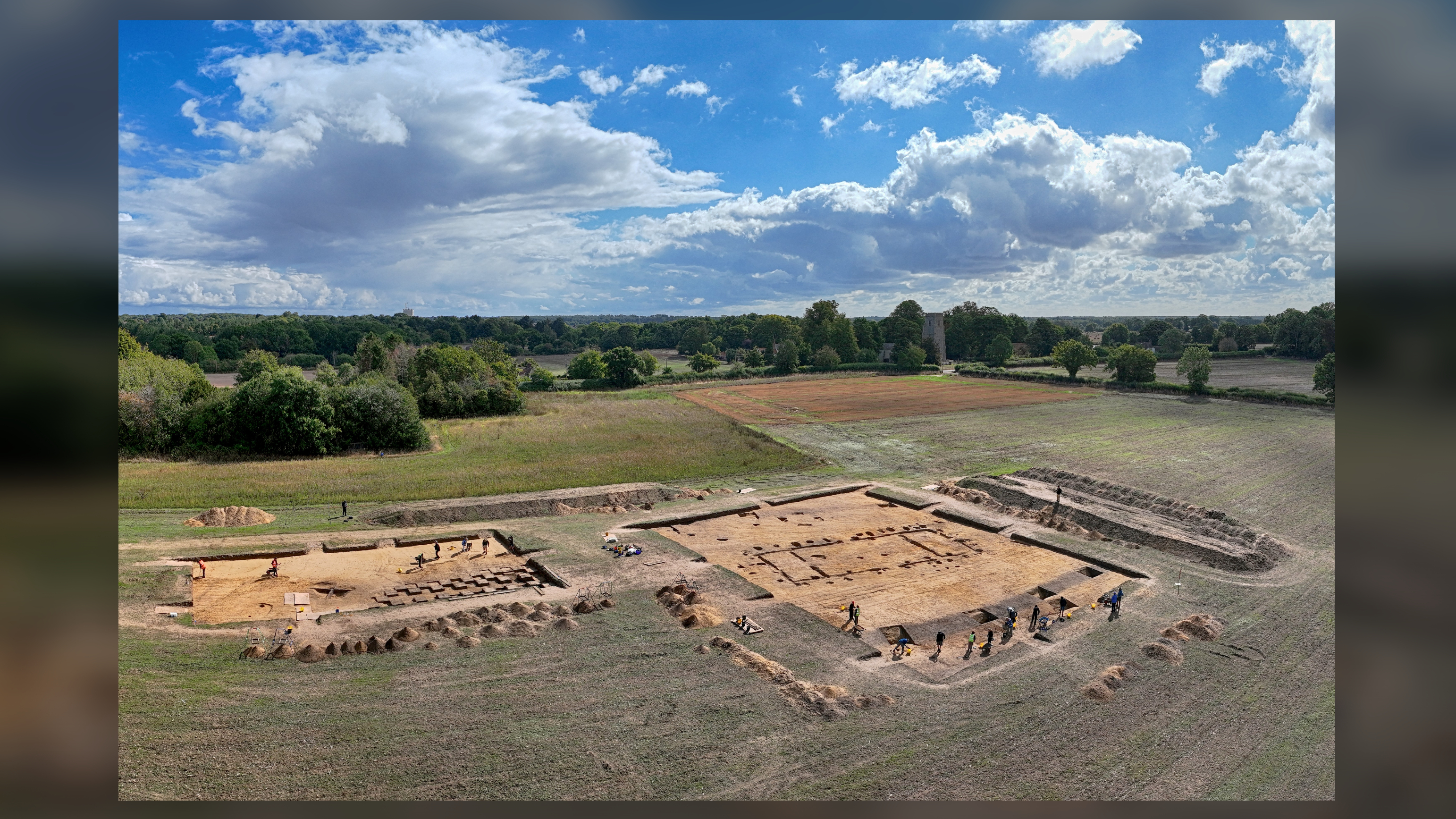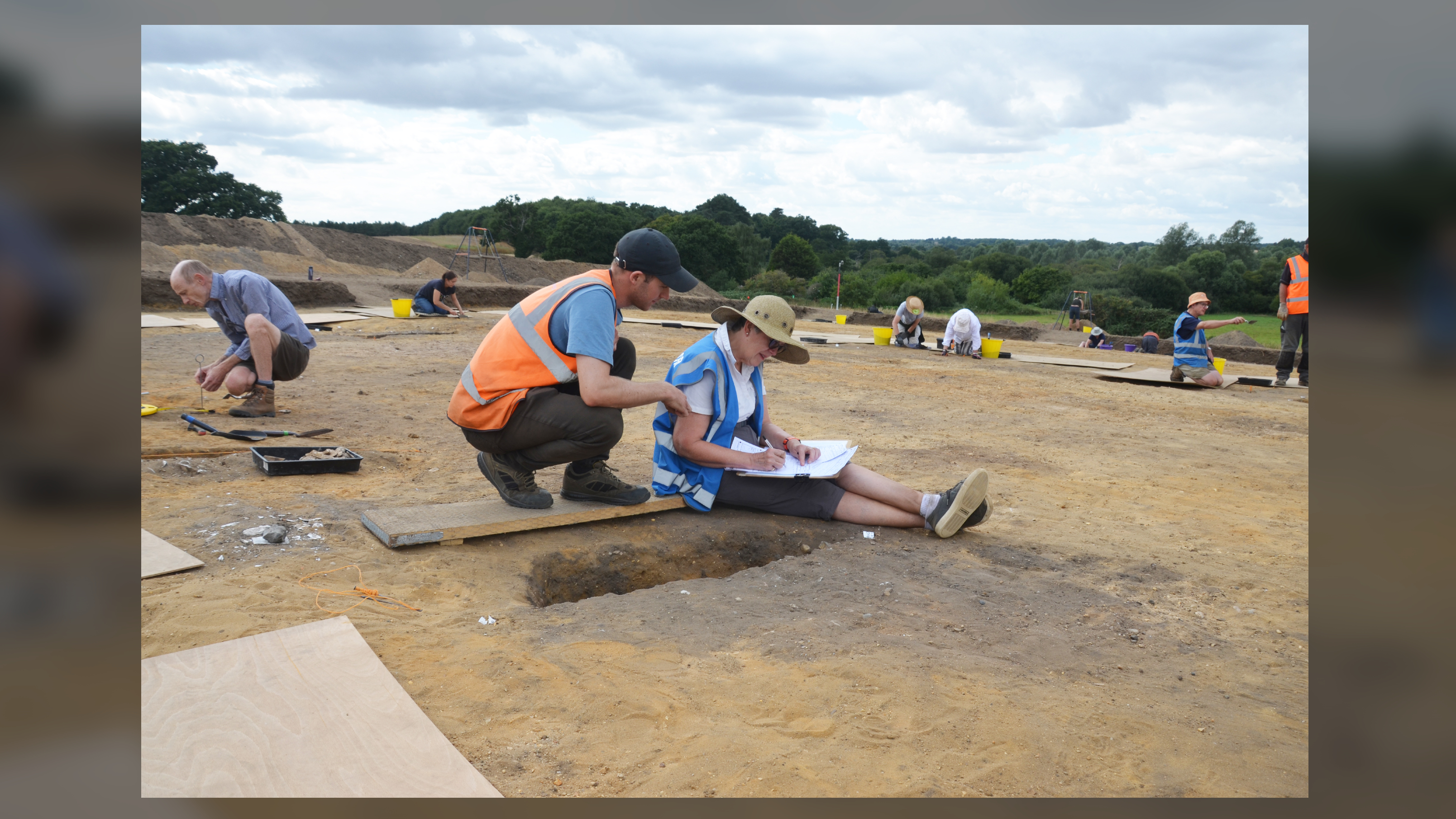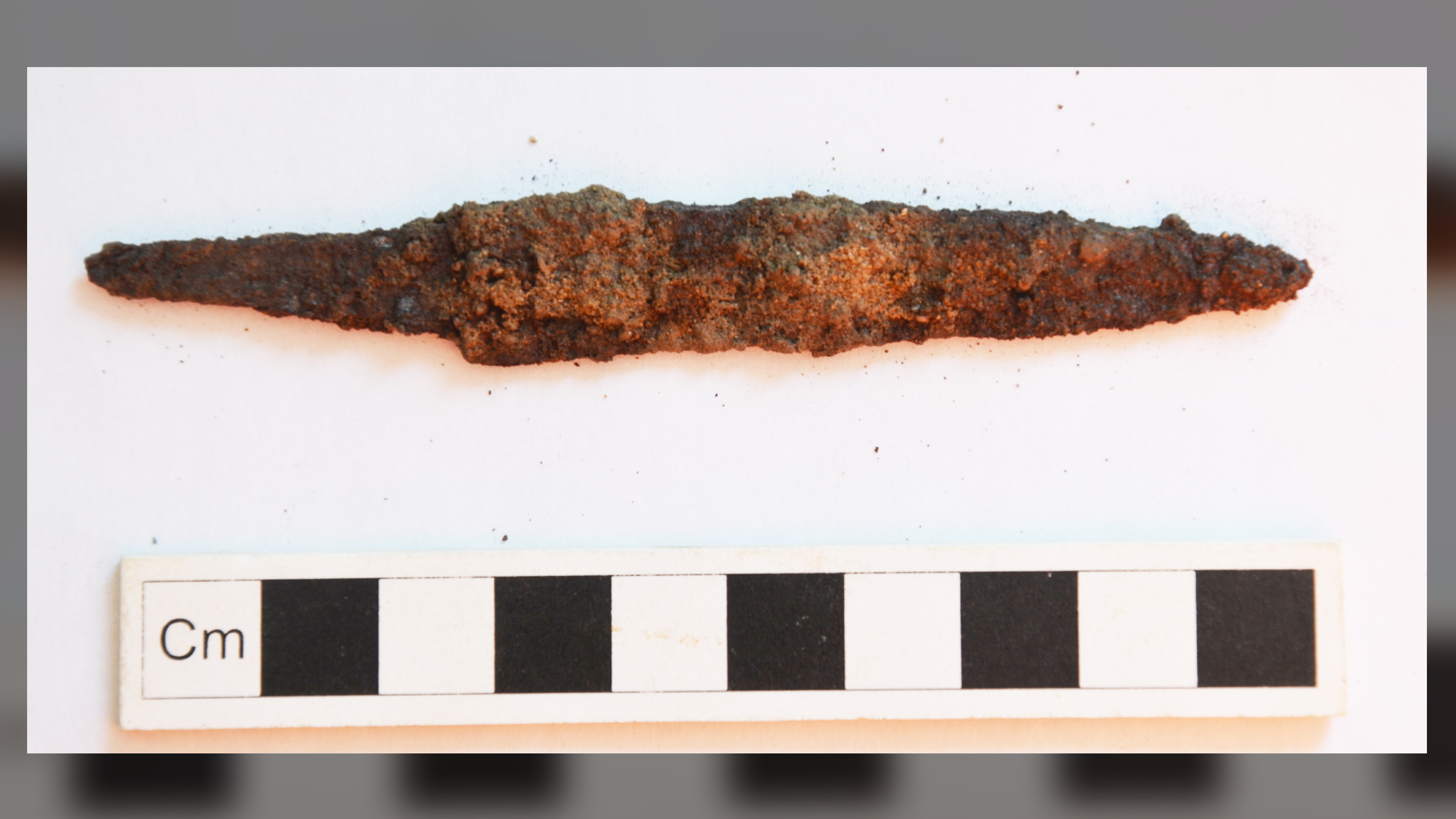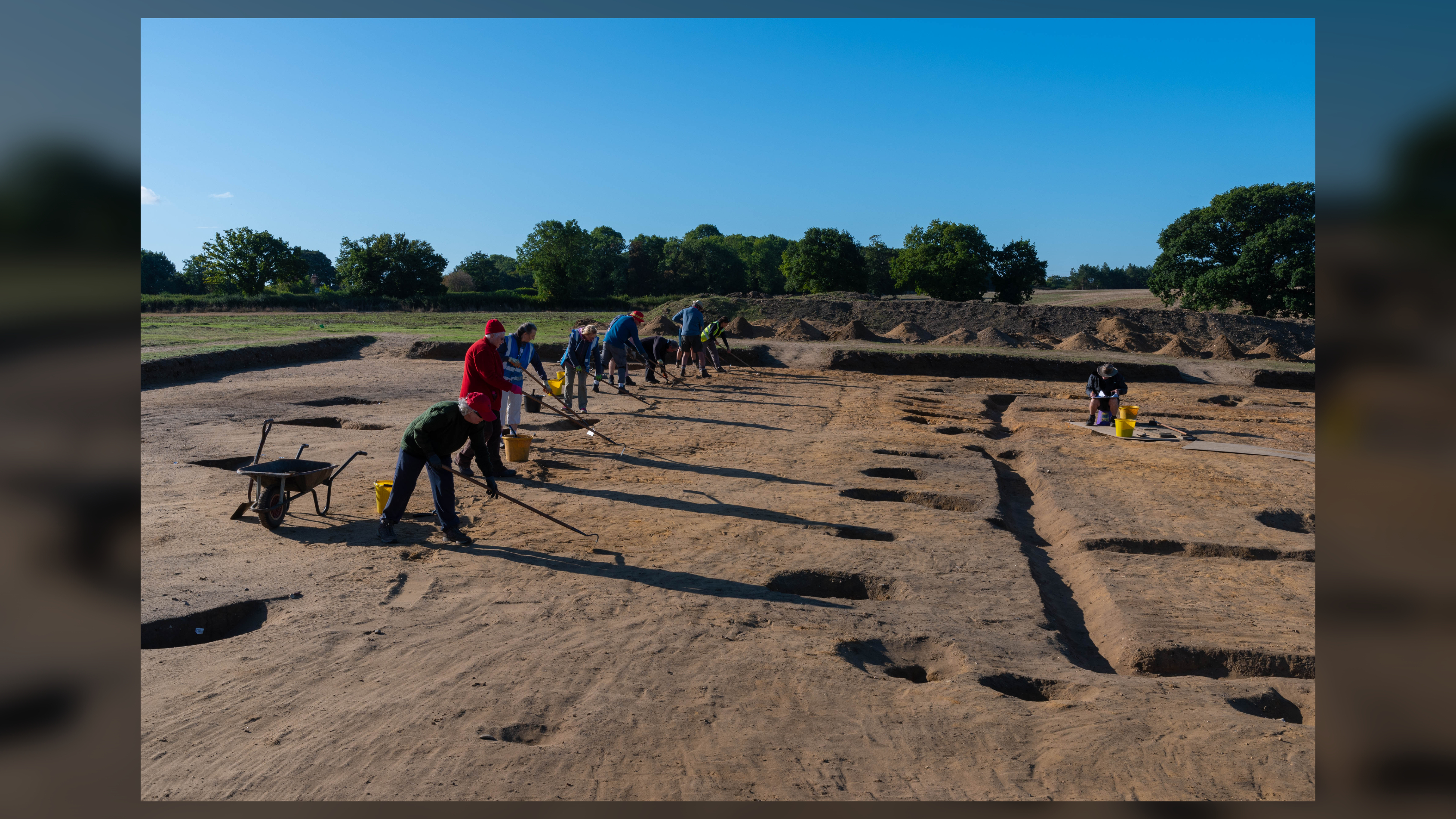Anglo-Saxon hall where kings and warriors dined discovered in England
An excavation has revealed an elaborate hall in the east of England of early Anglo-Saxon kings, which was used for feasting by monarchs and their warriors roughly 1,400 years ago.

Archaeologists in the east of England have unearthed the remains of an elaborate hall that Anglo-Saxon monarchs and warriors feasted in roughly 1,400 years ago.
The remains of the royal hall — near the village of Rendlesham in Suffolk, about 70 miles (110 kilometers) northeast of London — are only a few miles north of the famous Anglo-Saxon ship burial at Sutton Hoo and a few miles south of another ship burial near the village of Snape.
Archaeologists think both the Sutton Hoo and Snape burials were of rulers who had lived for a time at Rendlesham during their respective reigns, between about A.D. 570 and 720.
"These are the burials of individual kings who would have stayed at Rendlesham over a period of about 150 years," Faye Minter, the senior archaeological officer for Suffolk County Council, told Live Science.
"It's a royal residence, but the kings move around — they don't just live in one place," she said. "So it's highly likely that, at some point, the kings of East Anglia would have been living or staying at Rendlesham."
Related: Skull reveals Anglo-Saxon teen's nose and lips were cut off 1,100 years ago
Minter is leading the excavations of the largest hall in the royal compound at the site, which covers an area of about 15 acres (6 hectares). The foundations show it was a timber building measuring about 75 feet (23 m) long and 33 feet (10 m) wide; whoever built the compound constructed it on raised land and surrounded it with a boundary ditch.
Get the world’s most fascinating discoveries delivered straight to your inbox.
It's likely there were once up to 10 halls in the compound for the king and his retinue of hundreds of people, but only the largest hall has been confirmed by the latest excavations, she said.
Archaeologists have worked at the Rendlesham site since 2008, and the recent excavations are part of the Rendlesham Revealed project, which includes the work of hundreds of volunteers from local communities.
Anglo-Saxon settlement
The royal compound at Rendlesham was part of a larger settlement founded in the fifth century A.D., soon after the traditional date for the start of the Anglo-Saxon invasion of Britain, from about A.D. 450.
"The overall settlement is about 50 hectares [124 acres] in size, but from the late sixth century, you get a defined area [of the royal compound] within the larger settlement," Minter said. "So they put the royal residence within an Anglo-Saxon settlement that was already locally important."
The royal residence is recorded in the writings of the eighth-century English scholar Bede, who identified it as the place where in A.D. 662 the East Anglian king Aethelwald (also spelled Aethelwold) sponsored the baptism of King Swithelm of the East Saxons (a kingdom near London also known as Essex). Swithelm was an adult at this time, and his baptism represented the conversion of his kingdom from paganism to Christianity; Aethelwald's dynasty had been Christian for decades.
The royal hall was first identified in 2015 by aerial photography, which showed cropmarks at the site that indicated the positions of its largest posts, Minter said. But it wasn't excavated until this summer, when archaeological trenches revealed fragments of glass drinking vessels and pottery; dress jewelry; personal items, such as copper pins; an iron knife; and the remains of food preparation and feasting, which indicated that vast quantities of beef and pork had been consumed there — a luxury at a time when Anglo-Saxons mainly ate vegetables.





Royal residence
Archaeologists think the royal compound at Rendlesham was occupied by the king and his warriors for several months at a time — as long as the food lasted — before they'd move on to a different residence somewhere else in the kingdom.
"We think it probably would have been seasonal," Minter said. "They would have come with a lot of warriors and a big retinue, and it probably would have increased the population of the settlement quite a lot."
Related: Medieval map of Britain may reveal evidence of mythological islands
"And I think they would have sort of 'eaten the cupboard bare' and then moved on to the next place, so they could be seen as ruling over the whole kingdom," she said.
East Anglia, comprising the modern English counties of Norfolk and Suffolk, was one of the seven main Anglo-Saxon kingdoms in Britain, known as the Heptarchy; the others were Essex, Kent, Sussex, Wessex, Northumbria and Mercia. They were founded soon after the collapse of Roman rule in Britain, a date traditionally held to be A.D. 409. But historians and archaeologists debate the scale, nature and impact of the "invasion" of the Saxons, Angles and Jutes from Northern Europe. A September study published in the journal Nature analyzed the DNA of nearly 500 people who were buried in England between A.D. 400 and 900. The results suggested that there was a large migration of people with Northern European ancestry into England, but that this wave of people were likely migrants, not invaders.
In any case, the Anglo-Saxon kingdoms were unified in the ninth century under Alfred the Great, a king of Wessex; they eventually gave England its name, which means "land of the Angles."
Christopher Scull, a historian and archaeologist at Cardiff University in Wales and an academic adviser for the Rendlesham Revealed project, said in a statement that the latest finds were of "international importance."
"Only at Rendlesham do we have the wider settlement and landscape context of an early English royal center, together with an assemblage of metalwork that illuminates the lives and activities of its inhabitants across the social range," he said.
Tom Metcalfe is a freelance journalist and regular Live Science contributor who is based in London in the United Kingdom. Tom writes mainly about science, space, archaeology, the Earth and the oceans. He has also written for the BBC, NBC News, National Geographic, Scientific American, Air & Space, and many others.



